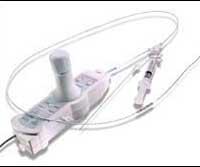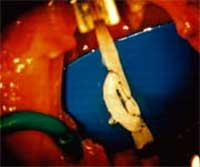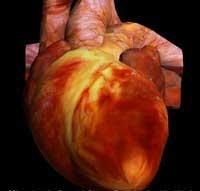New cardiovascular techniques
2002/02/24 Mendiburu, Joana - Elhuyar Zientziaren Komunikazioa
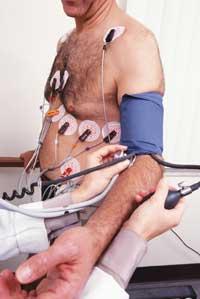
Medicine takes great advantage of the development of new technologies. Proof of this are the new techniques published in conferences and symposia. This time, the news comes from Miami.
At the recent symposium on vascular therapies, experts at El Camino Hospital in California presented a new closed artery extension technique. Doctor James Joyce believes that this technique called cryoplasty is less aggressive than angioplasty and reduces the side effects of angioplasty.
When the caliber of the coronary arteries is closed or prevented, serious problems such as myocardial infarction or angina appear. The most common solution is angioplasty, i.e., the introduction of a catheter with a small pump at the end of a marginal artery. The pump swells as many times as you want, thus extending the obstruction. When blood flow improves, the "pelotite" comes out.
But this technique, widely used, leaves scars in the arteries and also swells the artery. After six months, several patients re-tighten blood vessels in the same way and require a second intervention. To avoid this, a tubular metal prosthesis is inserted in the angioplasty, but the expected results are not obtained.
Better closed artery opening technique

The cryoplasty they have presented in Miami is identical, but to inflate the pump nitrous oxide (NO) is used instead of the saline solution. Nitrous oxide is the gas of laughter, but in this case it does not cause laughter. It reduces the temperature of the layer that obstructs the artery to -10 °C and causes cellular apoptosis, scheduled suicide. The technique has been developed at El Camino Hospital in California, and according to its doctor, James Joye, the damage to the blocked artery is less than angioplasty. He also assured that cryoplasty is as safe as angioplasty, with the same risks as angioplasty, but with fewer side effects.
Cryoplasty has been tested in Europe and South America in the arteries of the legs. They have treated 15 people and, nine months later, twelve patients have not needed a second intervention, that is, they have not closed the artery again. Normally, between 50% and 60% of patients need a second angioplasty in the arteries of the legs and between 20 and 30% in cardiovascular.
In fact, the U.S. Food and Drug Administration (FDA) has approved the start of clinical sessions in heart arteries, and about a hundred people have begun testing the first phase.
Not the only substitute
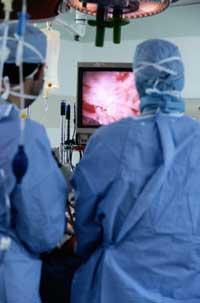
To avoid problems arising from obstructed coronary arteries, there are other widely used techniques such as bypass. This procedure involves making bridges through the legs or other arteries of the heart.
Although not as well known, there is another option. This new type of intervention has only been performed for the moment to a patient. A 53-year-old man had severe arteriosclerosis that obstructed his heart arteries and could not be treated with angioplasty or normal bypass. Therefore, the blood that must carry the blocked arteries was diverted by the veins of the place. To do this, they took from the artery of the leg to the heart a catheter directed by ultrasound, with which they passed a needle through the coronary artery to the vein. Subsequently, the needle was replaced by a small tube and special valves and blockers were installed so that the poisons could perform the work of the artery.
Thanks to this new technique it is possible to carry oxygenated blood to the part of the heart affected by the poison and it is not necessary to open the chest for the intervention. As only one patient has tried, more trials must be done, but researchers have been hopeful.
This technique was unveiled in the journal Circulation, and if the trials continue, it will be a technique with many advantages and much to say. The intervention lasts only two hours and the patient only has to spend one or two days in the hospital.

This technique, developed by a group of specialists from the heart of Germany, Japan and the United States, allows to give an opportunity to patients who cannot be treated with previous techniques.
However, if so many research is published, these techniques remain improved, so it is ideal to balance food and avoid heart problems thanks to a healthy lifestyle. That is the safest path of the moment.
Published in 7K.

Gai honi buruzko eduki gehiago
Elhuyarrek garatutako teknologia




